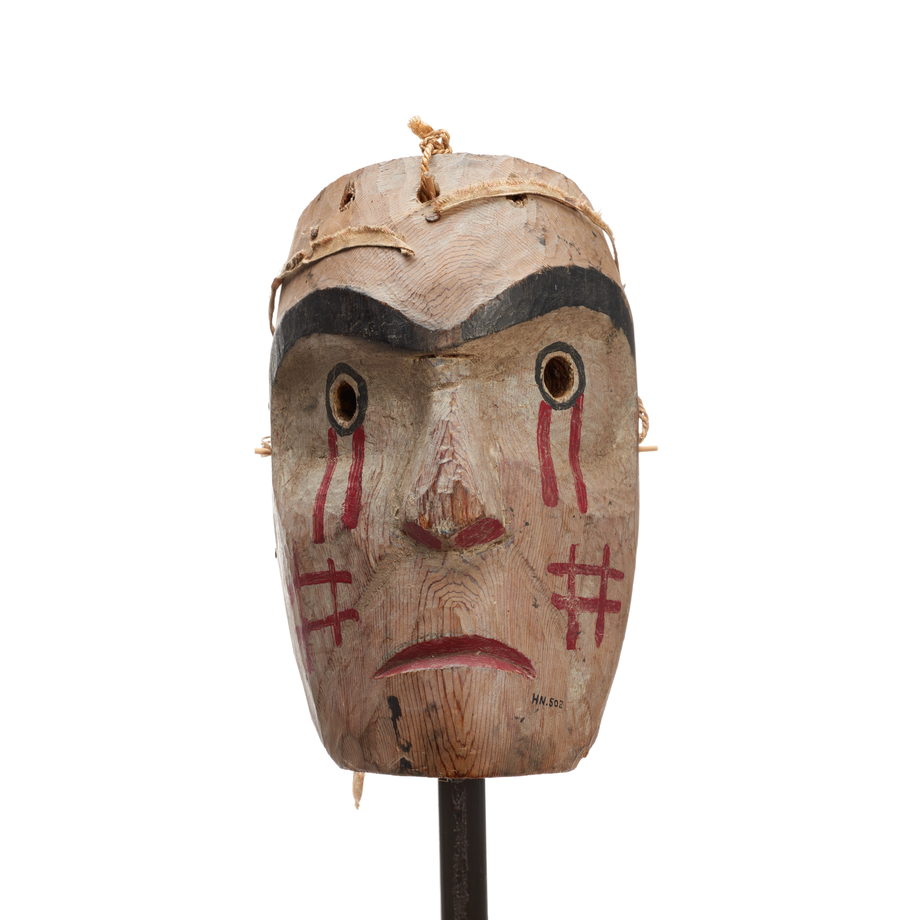K´wasanuma
Mourning Mask
Today, potlatches begin with mourning songs, but people no longer wear mourning masks. Professional mourners were traditionally women and it is unusual that these masks are male mourners.
Owner
Yekutłikalas, Sam Charlie, Mamalilikala (Village Island)
Catalogue Information
Provenance
Owned by Sam Charlie until its forced surrender to Indian Agent William Halliday on March 25, 1922. Halliday later displayed and photographed the seized pieces at the Parish Hall in Alert Bay. After doing an inventory, he crated the items in June, and at the end of September he shipped some of them to the Royal Ontario Museum in Toronto, on long-term loan from the National Museum of Man (now the Canadian Museum of History). They remained in the possession of the ROM until the NMM pulled its loan and returned the pieces to the Nuyumbalees and U'mista cultural societies in 1988. In 1995 Sam Charlie's daughter, Mary Beans (nee Charlie) requested her father's regalia be transferred from Nuyumbalees to U'mista for display.
Materials
Wood, Cedar; Metal; Fibre, Cotton
Dimensions
26.0 cm x 17.5 cm x 13.0 cm
Accession Number
95.03.003
Physical Description
K´wasanuma Mourning Mask carved out of red cedar. The white-washed humanoid face is painted with red and black details. Wood rings are still visible below the thin layer of white. The eyebrows are painted black, as are the irises of the eyes that encircle the carved sight holes. Both eyes have two red blood drops streaming from them. The cheeks have decorative designs that are cross-hatched, then painted to represent self-inflicted injury, a sign of grief and mourning. The lips are slightly frowning and painted red. This mask also has the remnants of a cotton cloth that was nailed to the top rim to conceal the wearer’s back of the head. White, red, black, brown.
